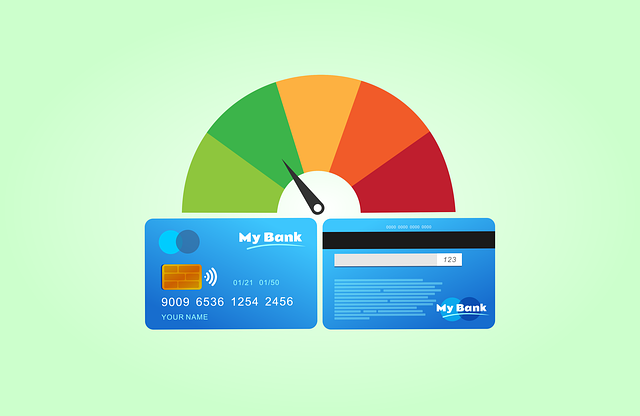Understanding different working capital loan types (lines of credit, term loans) and their benefits is crucial for businesses needing short-term financial support. Key considerations include interest rate structures, borrowing limits, and application processes which vary among lenders. A thorough evaluation of financial goals and capabilities ensures informed decisions aligned with budget and strategic objectives. Preparing essential documents, demonstrating positive cash flow, and crafting a compelling business plan strengthen loan applications and secure competitive interest rates, facilitating smooth market navigation for long-term success.
Obtaining a working capital loan can be a strategic move for businesses aiming to enhance their cash flow and capitalize on growth opportunities. This article guides you through the essential aspects of securing such loans, focusing on understanding different loan types, exploring the advantages, and most importantly, navigating the requirements and application process. From defining your needs to comparing interest rates, we’ll help you choose the right working capital loan that aligns with your business’s goals, ensuring a smooth and informed decision-making journey.
- Understanding the Types of Working Capital Loans
- Working Capital Loan Benefits
- Working Capital Loan Requirements
- Choosing the Right Working Capital Loan
- Working Capital Loan Interest Rates and Application Process
Understanding the Types of Working Capital Loans

Understanding the types of working capital loans is crucial when seeking to boost your business’s cash flow and manage short-term financial needs. These loans, designed to support day-to-day operations, come in various forms, each catering to distinct business requirements. From lines of credit to term loans, each option offers unique advantages and considerations. Working capital loan benefits include access to immediate funds, flexible repayment terms, and potential tax deductions for interest paid. However, they also carry the burden of interest rates, which can vary widely among lenders.
When choosing working capital loans, businesses should carefully evaluate their financial goals and capabilities. Factors like interest rate structures, borrowing limits, and application processes differ across providers. A thorough understanding of these variations enables informed decisions that align with a company’s budget and strategic objectives. The loan application process involves detailed financial disclosures and business performance data, ensuring lenders assess the creditworthiness of borrowers accurately.
Working Capital Loan Benefits

Working capital loans offer a range of benefits for businesses looking to boost their cash flow and manage operational expenses. Understanding the types of working capital loans available is crucial in choosing the right fit for your business needs. These loans are designed to provide immediate financial support, enabling businesses to navigate short-term cash flow challenges and seize growth opportunities. By accessing working capital, businesses can streamline operations, purchase inventory, pay bills, or fund expansion projects without delays.
When considering a working capital loan, it’s essential to evaluate the various requirements, including credit history, revenue streams, and business age. Working capital loan interest rates vary based on lenders, risk assessment, and loan terms. A well-prepared working capital loan application increases your chances of approval and access to competitive interest rates. This financial strategy allows businesses to maintain stability during unpredictable market conditions and positions them for future success.
Working Capital Loan Requirements

When considering a working capital loan, understanding the requirements is crucial for a successful application. This type of loan is designed to provide businesses with immediate financial support, catering to short-term needs such as operational expenses, inventory purchases, or cash flow management. Lenders offer various types, including short-term loans, lines of credit, and term loans, each with its own set of eligibility criteria.
To increase your chances of approval, prepare by gathering essential documents like financial statements, tax returns, business registration details, and identification proof. Demonstrating a solid business plan, positive cash flow, and a clear purpose for the loan are key. Additionally, choosing a lender that suits your needs is vital; compare interest rates, terms, and application processes to find the best working capital loan option for your business.
Choosing the Right Working Capital Loan

When considering a working capital loan, it’s crucial to understand that not all loans are created equal. Understanding the types of working capital loans available is the first step in making an informed decision. These can range from traditional bank loans to alternative financing options like lines of credit or business credit cards. Each type offers distinct working capital loan benefits and comes with its own set of working capital loan requirements. For instance, a line of credit provides flexibility but may have higher interest rates compared to a term loan.
The choosing working capital loans process involves evaluating your specific business needs, financial health, and future projections. Working capital loan interest rates vary widely based on factors like creditworthiness, loan amount, and the lender’s risk assessment. Therefore, comparing offers from multiple lenders is essential to securing the best rate. Additionally, thoroughly reviewing the working capital loan application process with each provider will save time and ensure a smoother experience. Remember, the right working capital loan can provide much-needed liquidity, fuel growth, and offer strategic advantages to your business.
Working Capital Loan Interest Rates and Application Process

Understanding the types of working capital loans is crucial when seeking funding for your business’s immediate needs. These loans are designed to provide short-term financial support, typically used for operational purposes like inventory management, payroll, or covering unexpected expenses. There are various options available, from traditional bank loans to alternative financing platforms, each with its own set of benefits and interest rate structures.
When considering a working capital loan, the application process is generally straightforward but requires preparation. Businesses need to demonstrate their financial health by providing recent financial statements, tax documents, and possibly personal guarantees. Lenders will assess your creditworthiness, revenue streams, and cash flow projections to determine the suitable loan amount and interest rate. Choosing the right loan type and lender can significantly impact your business’s bottom line, so it’s essential to evaluate the working capital loan benefits and understand the associated interest rates before applying.






